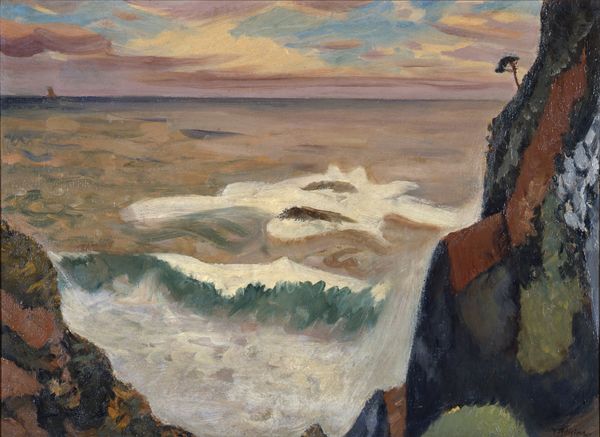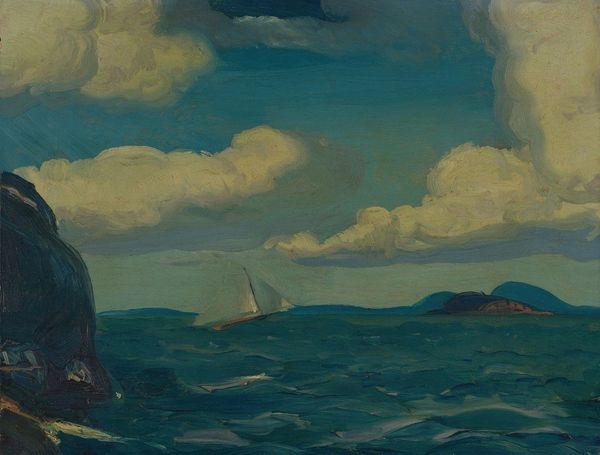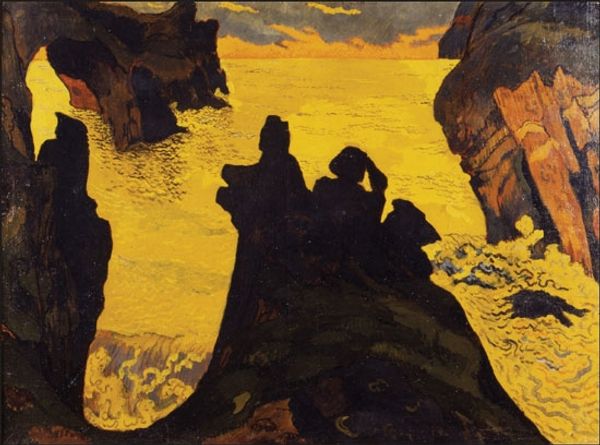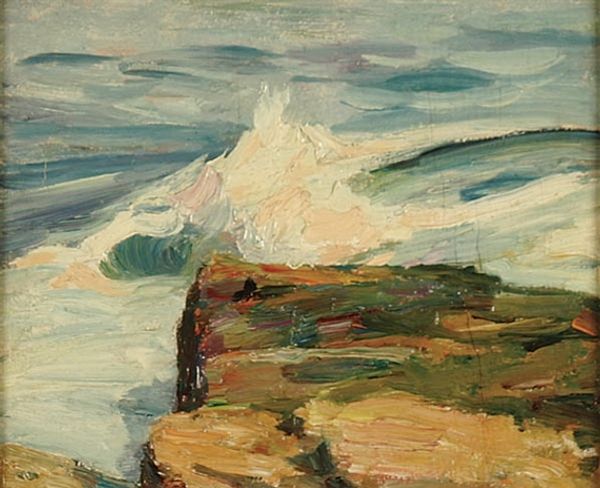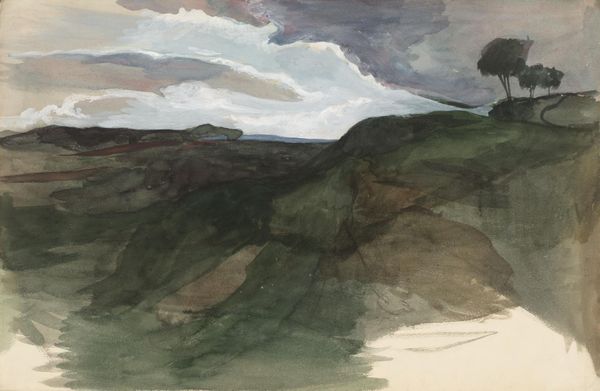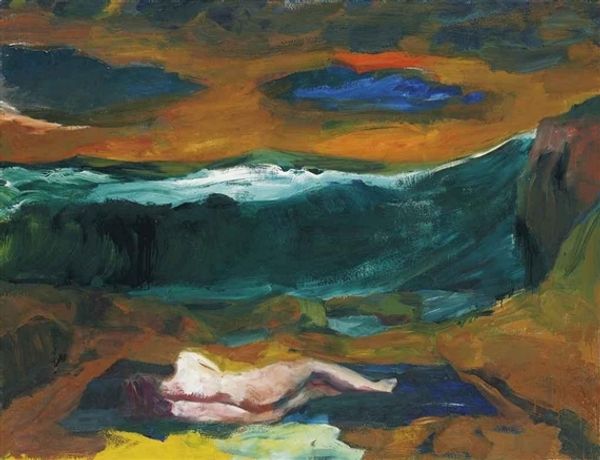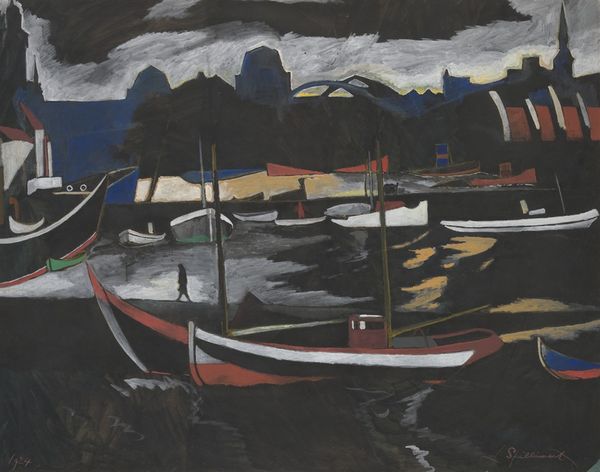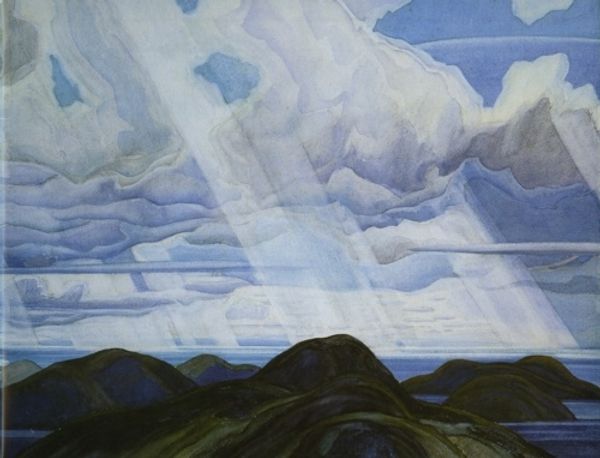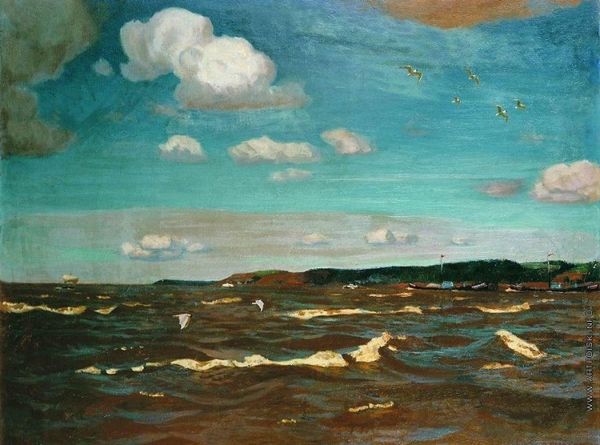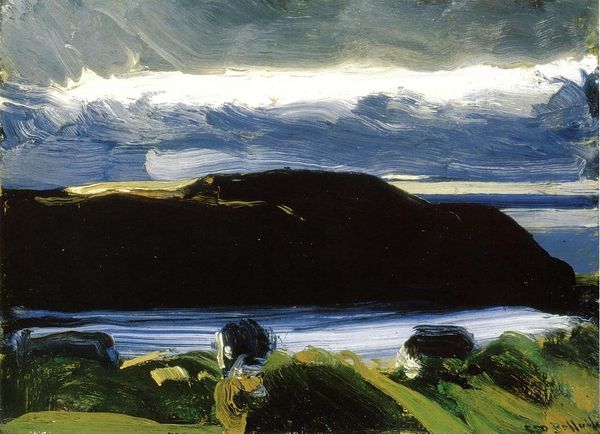
painting, oil-paint
#
painting
#
oil-paint
#
landscape
#
impressionist landscape
#
oil painting
#
neo expressionist
#
expressionism
#
ashcan-school
#
genre-painting
#
expressionist
Copyright: Public domain
Editor: So, this is George Bellows' "The Big Dory," painted in 1913. There's something really powerful about the composition – it feels tense and full of raw energy as the figures struggle with the boat. What's your take on this work? Curator: It strikes me as more than just a genre painting. Bellows, aligned with the Ashcan School, often depicted urban life and working-class struggles. Seeing that aesthetic transported to the sea, we might ask, who are these figures and what labor do they represent? The tension you describe speaks to a wider conversation around masculinity and physical exertion in the early 20th century. Does the image evoke any specific narratives about labor or social class to you? Editor: I guess I hadn't thought about it in terms of masculinity, but now that you mention it, there is this sense of them having to overcome the forces of nature. Are you suggesting Bellows might be commenting on the societal pressures faced by working-class men? Curator: Precisely. And consider the date – 1913. We're on the cusp of World War I. This image could be interpreted as a premonition of the struggles to come, both societal and individual. The dory becomes a symbol, doesn't it? A fragile vessel against an imposing sea, just as working-class men faced turbulent social conditions. Editor: I see your point. It's almost as if the painting anticipates the anxieties and challenges of the time. I hadn't picked up on those layers initially. Curator: Art has the power to both reflect and foreshadow, especially when situated within its historical and social context. It's about looking beyond the surface to unpack the deeper meanings embedded within the brushstrokes. Editor: I'll definitely look at Bellows’s paintings with a more critical eye moving forward, especially thinking about the historical currents he might have been responding to. Thank you for that insight! Curator: My pleasure! It's through these conversations that we start to understand art’s role in shaping and reflecting our world.
Comments
No comments
Be the first to comment and join the conversation on the ultimate creative platform.
